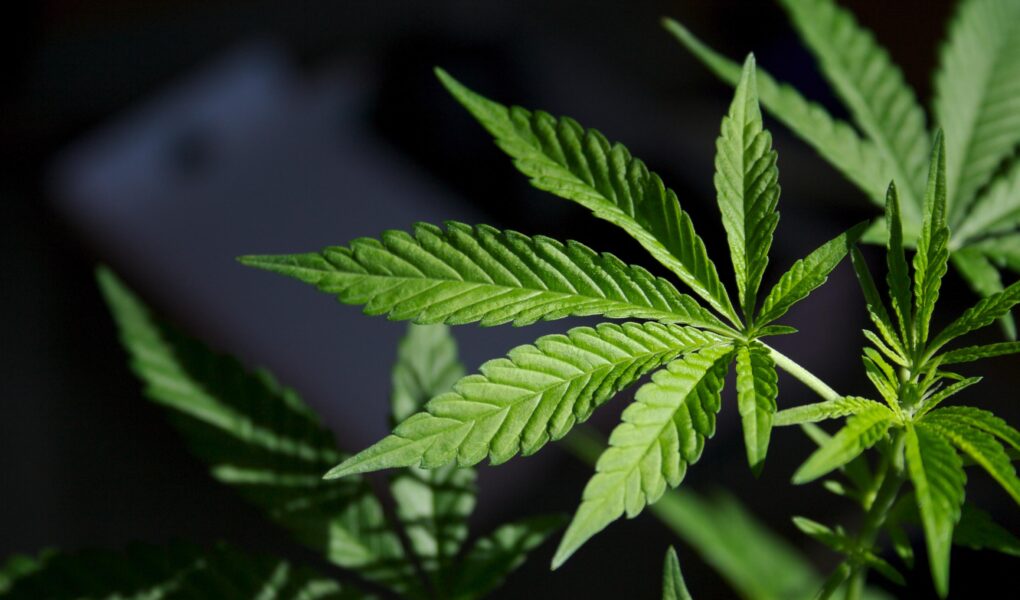In the evolving landscape of medicine, few topics spark as much debate and intrigue as the role of marijuana in therapeutic practices. Once relegated to the shadows of stigma and prohibition, this ancient plant has emerged into the spotlight, prompting patients, lawmakers, and medical professionals alike to reconsider its potential benefits and risks. But as the conversation surrounding cannabis evolves, a pressing question arises: Is marijuana truly a prescription drug? This article aims to unravel the complexities surrounding marijuana’s classification, explore its medicinal properties, and examine the regulatory frameworks that govern its use in contemporary healthcare. Join us on a journey through the intricate world of medical cannabis, where science, legality, and personal narratives intersect, illuminating the path toward understanding its place in modern medicine.
Table of Contents
- Exploring the Medical Applications of Marijuana as a Prescription Drug
- Legal Perspectives on Medical Marijuana Prescription Practices
- Understanding the Efficacy and Safety of Marijuana for Various Health Conditions
- Guidelines for Patients: Navigating Prescription Marijuana Use and Dosage Recommendations
- Q&A
- Future Outlook
Exploring the Medical Applications of Marijuana as a Prescription Drug
The therapeutic use of marijuana has gained considerable attention in recent years, leading to an increase in its acceptance as a legitimate prescription drug. Medical professionals are exploring its use to manage and alleviate various health conditions due to the presence of cannabinoids, compounds that interact with the body’s endocannabinoid system. Some notable applications include:
- Pain Management: Many patients suffering from chronic pain find relief using cannabis-based medications, potentially reducing their reliance on opioid prescriptions.
- Neurological Disorders: Conditions such as epilepsy and multiple sclerosis have shown positive responses to marijuana-derived treatments, helping to control seizures and muscle spasms.
- appetite Stimulation: Medical marijuana is often prescribed for patients undergoing chemotherapy or those with conditions like HIV/AIDS to combat loss of appetite.
Despite these promising applications, the use of cannabis as a prescription drug is not without its challenges. Regulatory frameworks vary significantly across regions, impacting accessibility and research on its efficacy. Below is a summary of the current state of marijuana as a prescription drug:
| Status | Description |
|---|---|
| Legalization | Varies by location; some states and countries have legalized medical use, while others maintain strict prohibitions. |
| Research | Increasing studies focus on efficacy and dosage, though further research is essential for widespread acceptance. |
| Patient Education | Ongoing efforts to ensure patients are well-informed about benefits, potential side effects, and legal considerations. |
Legal Perspectives on Medical Marijuana Prescription Practices
The landscape of medical marijuana prescription practices is influenced by a complex mosaic of federal and state regulations. While some states have embraced cannabis for medicinal use, others remain stringent in their prohibition. This discrepancy raises critical questions about the consistency and legality of prescribing marijuana. State laws can vary significantly, allowing healthcare providers to prescribe cannabis under certain conditions, while in other regions, such prescriptions may not be recognized. Here are some key considerations:
- State Authorization: Only states that have legalized medical marijuana allow healthcare providers to issue prescriptions.
- Qualifying Conditions: Most states specify certain ailments that can be treated with cannabis, such as chronic pain, epilepsy, or multiple sclerosis.
- Compliance Regulations: Physicians must follow specific procedures to prescribe medical marijuana, including patient evaluations and documentation.
On the federal level, however, marijuana remains classified as a Schedule I substance, making its prescription a legally gray area. This classification prevents physicians from prescribing cannabis in the traditional sense, as they would with medications that have established pharmaceutical status. Instead, they recommend cannabis use, complicating the medicinal marijuana narrative. Understanding these dynamics is essential for both patients seeking relief and providers navigating their ethical responsibilities. The interplay of laws can be summarized as follows:
| Aspect | Federal Law | State Law |
|---|---|---|
| Classification | Schedule I Substance | Varies by state |
| Prescription Legality | Illegal | Legal in some states |
| Guidance for Providers | None – Schedule I | Defined by state regulations |
Understanding the Efficacy and Safety of Marijuana for Various Health Conditions
As research continues to evolve, many are looking to marijuana as a potential treatment option for various health conditions. Preliminary studies suggest that the compounds found in cannabis, particularly tetrahydrocannabinol (THC) and cannabidiol (CBD), may provide benefits for ailments such as chronic pain, anxiety, and epilepsy. However, the efficacy of marijuana often hinges on various factors, including individual health profiles, dosage, and the specific formulation used. Patients and healthcare providers must consider the balance between the potential therapeutic effects and the risks associated with use, such as dependency and impairment.
To better understand the complex relationship between marijuana and health conditions, it’s essential to examine available data showcasing both effectiveness and safety. Below is a brief overview of some common health issues and the corresponding research findings:
| Health Condition | Potential Benefits | Safety Concerns |
|---|---|---|
| Chronic Pain | Reducing inflammation, alleviating pain | Risk of dependency, psychoactive effects |
| Anxiety Disorders | Calming effects, decreased anxiety levels | Potential for heightened anxiety in some individuals |
| Epilepsy | Reduction of seizure frequency | Drug interactions, potential side effects |
This table illustrates how marijuana can render significant advantages for certain medical conditions; however, navigating the safety landscape is crucial for anyone considering its use. Continuing research is necessary to fully comprehend the long-term effects and to establish guidelines that can help shape the future of medicinal cannabis.
Guidelines for Patients: Navigating Prescription Marijuana Use and Dosage Recommendations
When considering prescription marijuana, it’s essential to approach your treatment with clarity and understanding. Start by consulting with a qualified healthcare professional who specializes in medical cannabis. They will provide you with comprehensive guidance tailored to your specific health conditions. Be sure to discuss your medical history, any current medications, and the symptoms you’re looking to alleviate. This conversation will help shape your personalized treatment plan and dosage recommendations. Here’s what you should keep in mind:
- Understand your condition: Different ailments may require different strains or forms of cannabis.
- Consider the form: Marijuana can be consumed in various ways, including oils, edibles, or vaporized forms.
- Start low, go slow: Begin with a minimal dose to evaluate your body’s response before making adjustments.
As you navigate your dosage, monitoring and communication are crucial. Keep a journal to track your experiences with each dosage adjustment, noting any changes in symptoms or side effects. This record will be invaluable in future consultations, allowing your healthcare provider to fine-tune your prescription effectively. Here’s a simple table to help you track your usage:
| Date | Dosage | Method of Use | Effects Noted |
|---|---|---|---|
| MM/DD/YYYY | XX mg | Inhalation/Edible/Oil | Describe effects |
| MM/DD/YYYY | XX mg | Inhalation/Edible/Oil | Describe effects |
Remember that your experience with prescription marijuana is unique, and ongoing dialogue with your healthcare provider is key to finding the most effective regimen. By remaining informed and engaged in your treatment, you’ll be well on your way to managing your health with confidence.
Q&A
Q&A: Is Marijuana a Prescription Drug?
Q1: What qualifies as a prescription drug?
A: A prescription drug is a medication that is legally prescribed by a licensed healthcare provider, which requires a physician’s order for a pharmacist to dispense. These medications typically go through rigorous testing and regulatory approval processes.
Q2: Is marijuana considered a prescription drug?
A: The classification of marijuana as a prescription drug varies widely around the world and even within countries. In some regions, medical marijuana can be prescribed by doctors for specific conditions, while in others it remains illegal or unregulated.
Q3: How can marijuana be prescribed for medical use?
A: In jurisdictions where medical marijuana is legal, healthcare providers can evaluate patients for qualifying medical conditions, such as chronic pain, nausea from chemotherapy, or severe anxiety. If deemed appropriate, doctors issue a recommendation, which can be used to obtain medical marijuana from licensed dispensaries.
Q4: Does being prescribed medical marijuana mean it is recognized as safe and effective?
A: While medical marijuana is prescribed in some areas, the debate over its safety and efficacy continues. The lack of extensive clinical studies compared to traditional prescription drugs makes it a complex issue, with ongoing research needed to establish definitive outcomes.
Q5: What forms of medical marijuana are available?
A: Medical marijuana comes in various forms, including oils, capsules, tinctures, edibles, and dried flower. Each form has different onset times, durations, and effects, allowing patients to choose based on their needs and preferences.
Q6: Are there differences between recreational and medicinal marijuana?
A: Yes, medicinal marijuana is often cultivated and prescribed for therapeutic effects, typically focusing on specific cannabinoid profiles that target particular symptoms. Recreational cannabis, while also used for enjoyment or relaxation, may not have the same level of scrutiny in terms of its effects and usage standards.
Q7: Can someone get a prescription for marijuana if it’s legal in their state?
A: Yes, if an individual’s state allows for medical marijuana prescriptions, they can consult with a qualifying healthcare professional. Documentation of a qualifying medical condition is typically required to receive a prescription or recommendation.
Q8: What are the potential risks associated with using medical marijuana?
A: Like any medication, medical marijuana carries potential risks and side effects, including dizziness, fatigue, or changes in mood. It can also interact with other medications, so it’s essential for patients to discuss these risks with their healthcare provider.
Q9: What is the future of marijuana as a prescription drug?
A: As attitudes toward marijuana evolve, its integration into medical practice is likely to grow. Ongoing research and changes in legislation could lead to more standardized guidelines, improved formulations, and broader acceptance within the medical community.
Q10: Should patients consider medical marijuana as an alternative?
A: Patients should approach medical marijuana as they would with any treatment option—researching, consulting with medical professionals, and weighing the potential benefits against risks. It’s important to make informed decisions tailored to individual health needs.
Future Outlook
As we conclude our exploration of whether marijuana qualifies as a prescription drug, it becomes clear that the conversation is as multifaceted as the plant itself. The shifting legal landscapes, evolving scientific research, and varied medical perspectives all contribute to a tapestry of understanding that is still being woven.
While proponents highlight the therapeutic potential of cannabinoids for numerous ailments, skeptics urge caution, emphasizing the need for rigorous clinical trials and regulatory oversight. The debate raises crucial questions not only about the nature of medicine but also about how society defines and utilizes substances that can alleviate suffering.
As we navigate this complex terrain, the future holds promise for both patients seeking relief and researchers eager to unlock the myriad possibilities of marijuana. Whether it eventually finds its place as a mainstream prescription drug or remains a nuanced adjunct in the pursuit of health, one thing is certain: the dialogue surrounding marijuana is far from over. As policies adapt and knowledge expands, staying informed will be vital for anyone interested in the evolving role of this intriguing plant in modern medicine.



